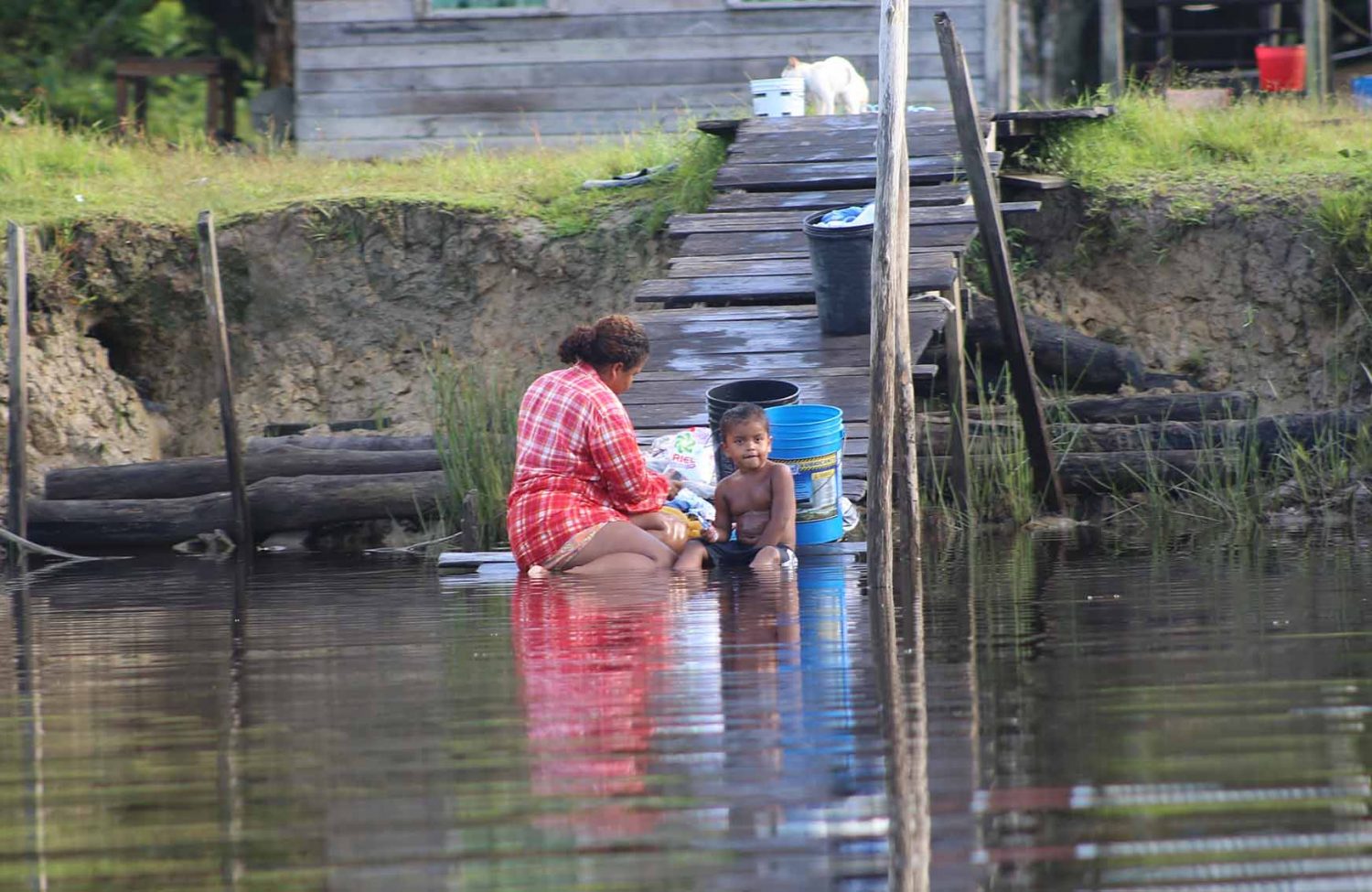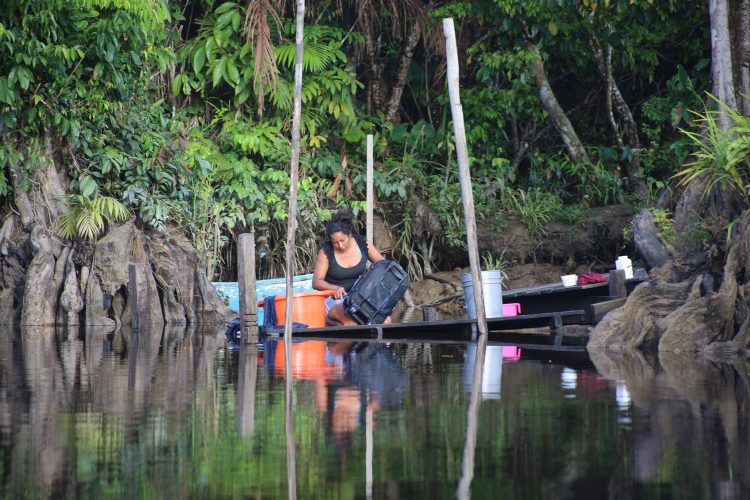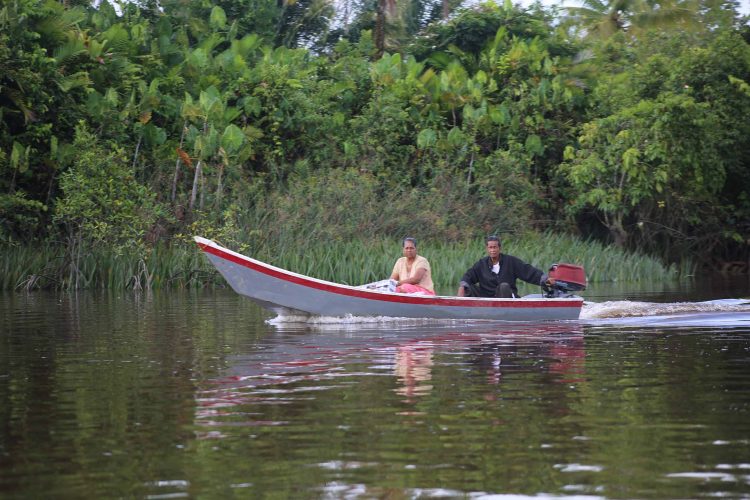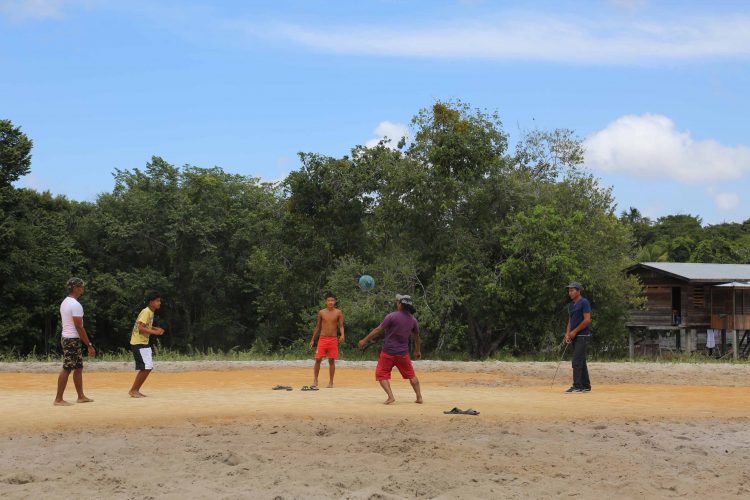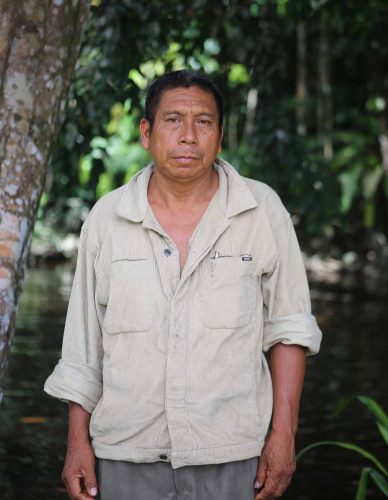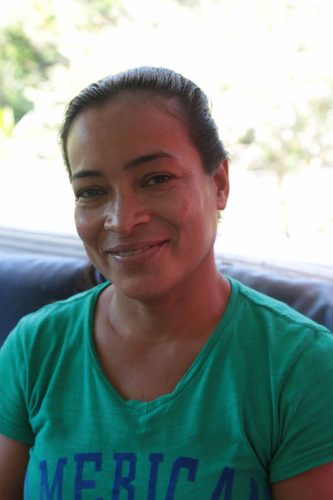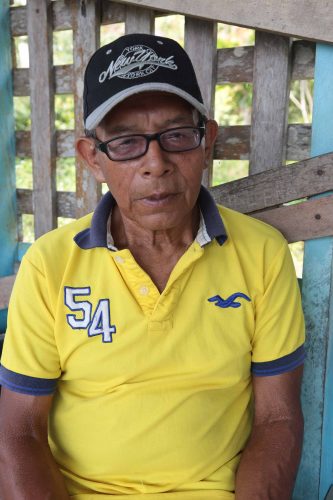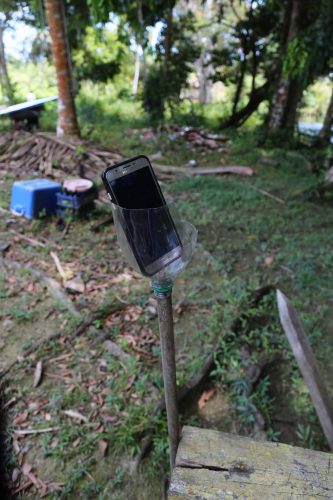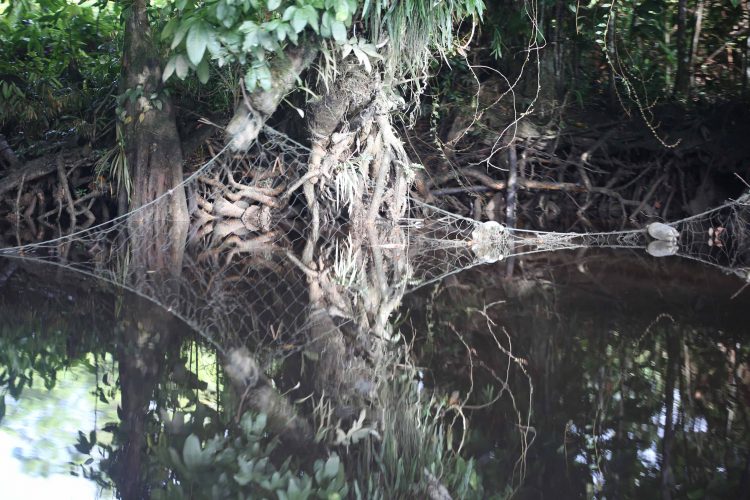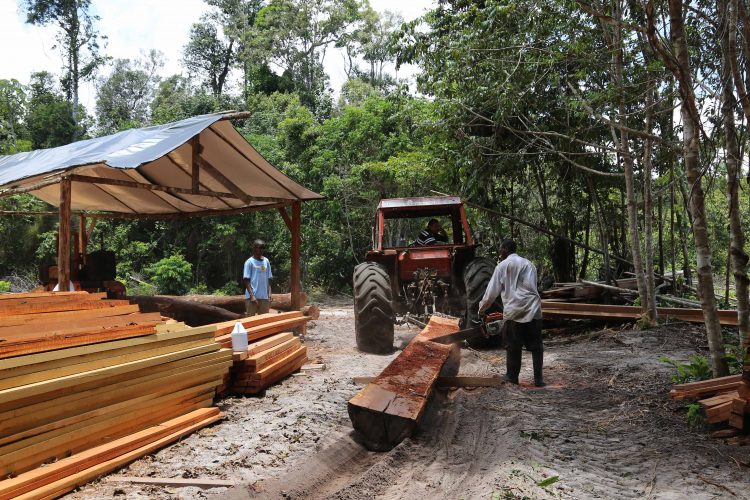Bethany is a charming little village in the Pomeroon/Supenaam region. According to a recent census, it has approximately 406 residents, who thrive mainly on logging and farming activities.
The more than 100-year-old village was said to have been named for a place mentioned in the Bible. Though it began as a Seventh-Day Adventist (SDA) settlement, with villagers being members of the little SDA church on a hill, and there is a school where persons from Guyana and other parts of world study to become missionaries, some are not as strict anymore as regards religion.
To get to the village one has to take a boat from the jetty at the Supenaam Creek. There are no regular boats working this route, as most villagers have their own, so one may hitch a ride with a villager at a cost of $500; or hire one for $8,000.
It was almost two hours after daybreak when we left the jetty. Along the way, mothers sat on landings doing laundry; their young children nearby. Their reflections were the only colours on the calm black water that still looked asleep. Huge tree roots growing out of the water added to the tranquil scene.
The Thomases were our guides for the day and our first stop was at their home for a lovely breakfast of eggs, bakes and tea with fresh papaya on the side. They live on the creek where the only access to homes is by boat. However, on the mission one gets around on foot. As we left their landing, their dog Max looked on longingly. When we arrived on the opposite side to meet Toshao Harold Marslowe, a dripping Max stood there panting; he had swum across.
Marslowe said his father was from Caria Caria and settled in Bethany after marrying his mother, a native of the village. Marslowe has a wife and five children.
The main economic activities are farming of ground provisions and logging; Marslowe is a farmer. Most of the women are housewives, while some are nurses or teachers. Unemployment, he said is one of the major setbacks.
Snakes are prevalent, Marslowe said, especially the labaria feared for its deadly venom. There are also anacondas which make off with chickens and parrot snakes, which a resident said he stepped on while making his way across a bridge. Just a few weeks ago, a farmer who had set his seine in the creek close to some trees returned to find an anaconda trapped in it.
It is not often that persons are bitten by labarias, but whenever they are, most use charcoal to treat it, although the toshao said he believes the Bethany Health Post has treatment for snake bites. Marslowe explained that charcoal dissolved in water is given to the victim to drink, while a charcoal poultice is placed on the wound and changed every hour for 12 hours.
The toshao said he was once a victim of a labaria. He was heading home from work when he was bitten and thought that a thorn had pricked him. But when he looked around, he saw the snake coiled to attack again and killed it. An instant later, he felt his head go numb and not having charcoal made a poultice of worm-bait wood mixed with thistle which healed him. A month later, he was heading downhill when his foot made contact with a rotted rope. He broke into a sprint with the rope rolling down the hill behind him. It was not until he got to the bottom that he realized it was just rope. He laughed as he shared this experience, adding that fear can kill a man.
Almost every family has more than one boat. A boat costs around $350,000, but some people build their own.
“Some people here are very unfortunate; they don’t have houses,” Marslowe said. “… We had Food For The Poor build eight houses some time ago. We would like a road at the start of Bethany so children can have easier access to school. When is high tide, the creek does be running in one direction for days and it’s strenuous for them to get to school with their boats. Most children attending primary school paddle to school themselves. Parents take the children attending nursery school. We’d also like a well at the school to provide children with water to drink. When is dry season the water in the tank does go down and it’s not wholesome for them and they prefer to drink the creek water because of this.”
We ran into David Paton, who was heading to the landing. The 69-year-old man said he was born in Bethany. “Bethany is a place of tranquility. It’s a nice place to bring up children; we are a Christian-knitted community,” he said.
He explained that Bethany is a biblical name meaning place of palms. According to him, a family by the name of Van Lang migrated from the Demerara River; they were Adventists. They came after learning that the Bethany forest was huge and the soil was believed to be rich. When the Van Langs arrived, they met the Wilsons, the Thomases and the Couchmans. Later, people arrived from Tapacoma and Mashabo.
Paton was in a hurry to get to Supenaam, but said, “I would like to see people more diversified and bringing in more income. I’d like to see more farming… I want more job opportunities available for our young people while holding steadfast to their morals so as to be strong community-wise.”
Leaving Paton at the boat landing, we began a wearying walk uphill through thick white sand which was often unstable. By the time I got to Joan Russell’s place I was breathless. Russell was also born in Bethany and is currently the headmistress at Lima Sand Primary on the Essequibo Coast. She usually spends weekends at home and has been attached to Lima Sands Primary since 2011. Before that she taught at Kopeinang Primary in Region Eight (Potaro-Siparuni).
“Bethany is home. It’s quiet. There’s no place like home. Although I fell in love with Region Eight, it’s not home,” Russell said.
“Growing up here as a little girl was nice. We went to school right here on the hill and played with our friends on the ballfield. We often swam at the big landing. We grew up working hard as well. My family had a big farm and we would have to fetch out pineapples, ground provision, bora, pumpkin, and black-eye peas. We would sell at the market at Supenaam. At that time big trucks from GMC [Guyana Marketing Corporation] used to come and buy from us. We would buy rice and other groceries from Supenaam, but when it came to fruits and vegetables, we ate what we produced.”
Back in those days she said, villagers would go on fishing trips venturing to creeks further away those people used every day. They would poison the water with the ‘hyarie’ poison they got from vines. This made fishing easy. This is no longer allowed.
Pointing to a trail that led to the mission school a mile and half away, Russell said it also takes you to Mashabao situated seven miles from Bethany. The trail is also connected to Capoey and Huis T’ Dieren, which is four hours away on a dirt bike.
One issue with farming is the acoushi ants that plague farms. Farmers tend to use chemicals to get rid of them.
While jaguars are no longer much of a threat, there was a time when they would make off with dogs. The last incident was two years ago.
Russell, who has been teaching for decades, will retire soon and plans to go into business. Most people have to venture outside of the village in search of jobs, she noted.
“I would like to see a road built here. We also need a multipurpose building where we can have our meetings and workshops or just have fun. If we don’t do these things for our young people and have them involved, they will become idle. We can with a building provide wholesome activities for them,” she added.
Opposite her house is a park, which she said was the brainchild of her late brother, a toshao. Built through self-help, it is used for heritage celebrations and meetings. Planks and tables are placed all over for sitting and enormous trees provide shade. There is a small pavilion, which the community deems the ‘hotspot’ as it is the best place to make cell phone calls.
Nearby is Bethany’s cemetery which has specially reserved areas for each family in the village. Leaving Russell chatting with relatives, we walked one and a half miles to the mission school through the same unstable sand. Some of the missionaries were gathered in the kitchen preparing meals and doing other chores. Right behind the mission is a large airstrip.
Back at the Thomases, we sat down to mouthwatering dhall and rice with calaloo and ground provision, which we washed down with cool glasses of swank (lime drink).
Ramona Thomas was the cook and is the midwife at the Bethany Health Post. She is also the mother of three children, the oldest being Guitarist Myron Thomas who was featured in The Scene some weeks ago.
Growing up, she shared: “Life for us here was very, very hard because it was nine of us children. My mother who was illiterate and faced many hardships pushed her children to get an education. We went to school bare feet when many children had to wear. We had one boat and my father had to go to work with it so we would swim across the creek… then walk to school. We never had incidents with reptiles.”
She attended Bethany Primary then went on to the secondary department where she wrote the Secondary School Proficiency Examination parts one and two.
Later, after marrying her husband she moved to the mission to live with him. Their union produced three children. Because of the challenge of getting about through the thick sand and wanting to have more fertile land for farming, they moved to the riverain area.
“There’s nothing sweeter than waking up in the mornings to the cold, fresh air and the singing of the birds,” she said. Even as she spoke, a thrush flew back and forth feeding her babies in a nest in the roof. On the other side of the verandah a blue tanager fed her baby birds also having nested in one of the children’s trophies.
Thomas praised her lot for being able to eat healthy, knowing the foods is not contaminated with chemicals.
What worries this mother most is that children in Bethany are instilled with values different to their peers in the towns, which she hopes will remain with them. One peeve is the lack of proper network reception. Although both networks are available, getting signals is a challenge. Just about every house has a spot where calls can be made. Those whose spots are in their yards put a stick into the ground and place a plastic bottle on top to hold their phones; they call these their phone booths. They cannot pick up their phones or bend their necks to hear, so they have no choice but to put their phones on speaker. This means there are no private calls.
Thomas would like to see roads being built in the village, for the place to be more environmental friendly, for children to be encouraged to finish high school and for there be more jobs available for them.
Heading back to Supenaam, we encountered traffic: people were traversing the waterway in their boats. In one particular boat, a coconut branch and another tree branch were stuck upright. Thomas explained that the branches were being used as a sail now that there was a wind.
At the Supenaam Stelling scores of angry passengers were being turned away. There was no 4 o’clock ferry, the boat that was there was for a cruise that day. Many persons had no option but to take the costly speed boat ride back to Parika.
